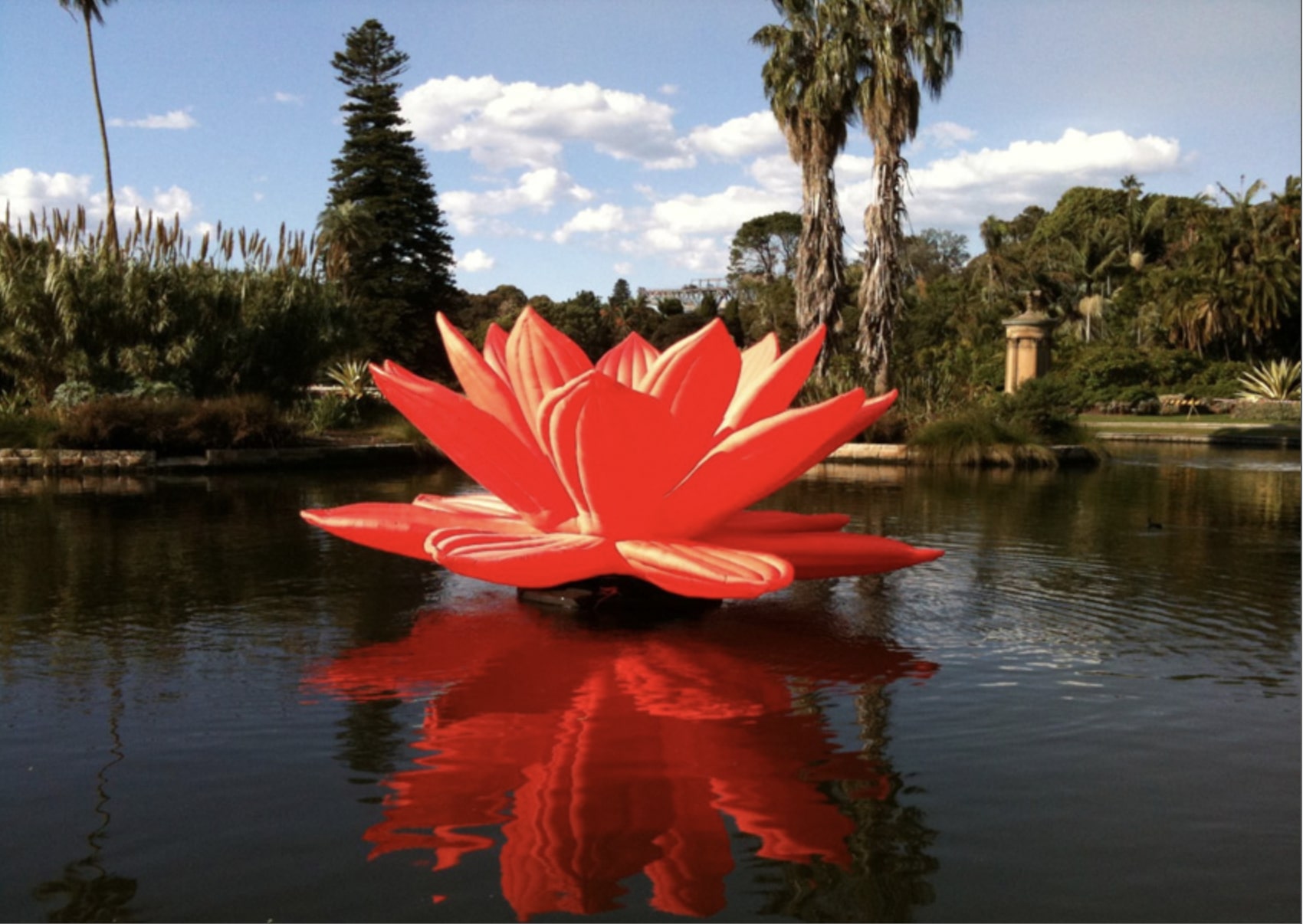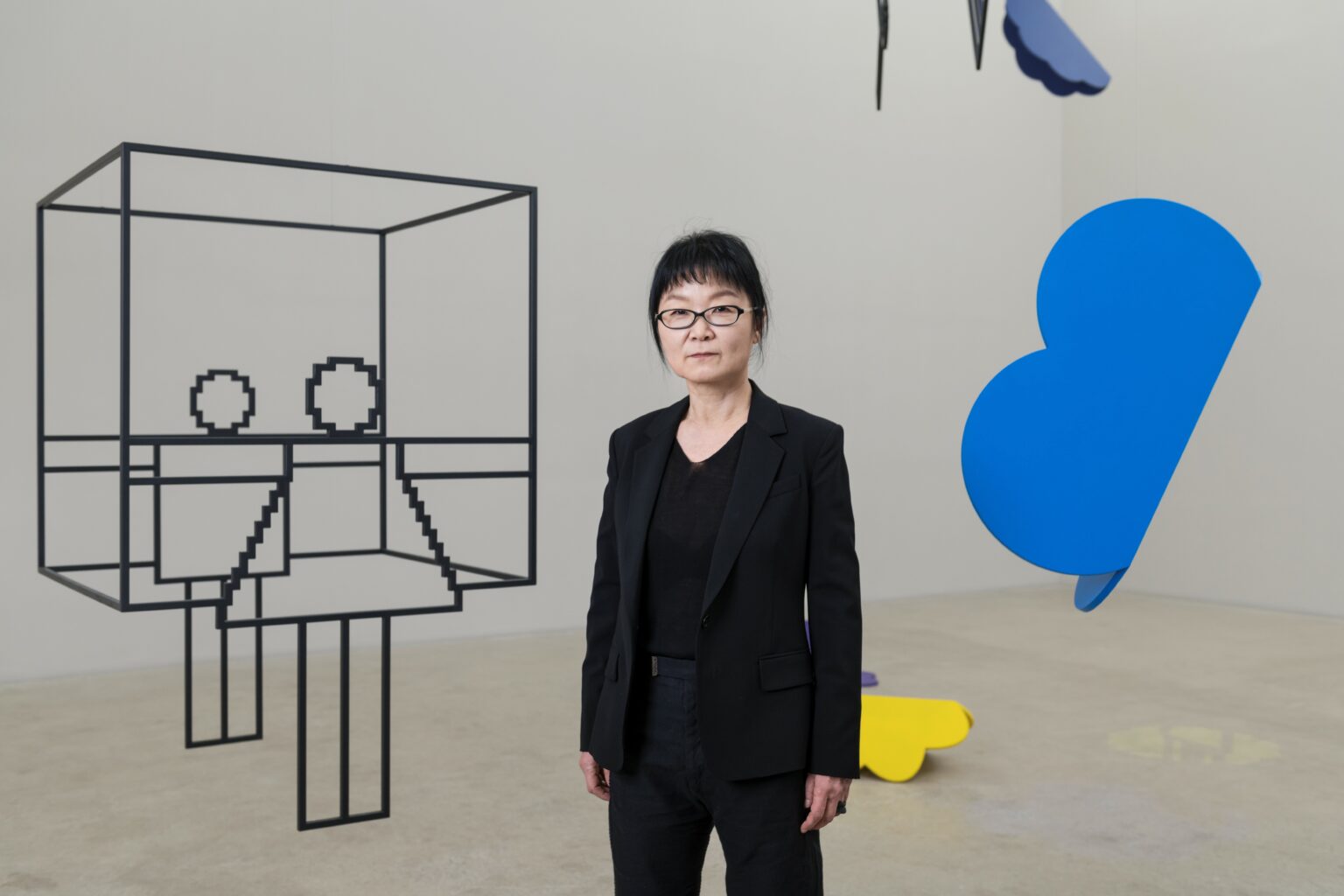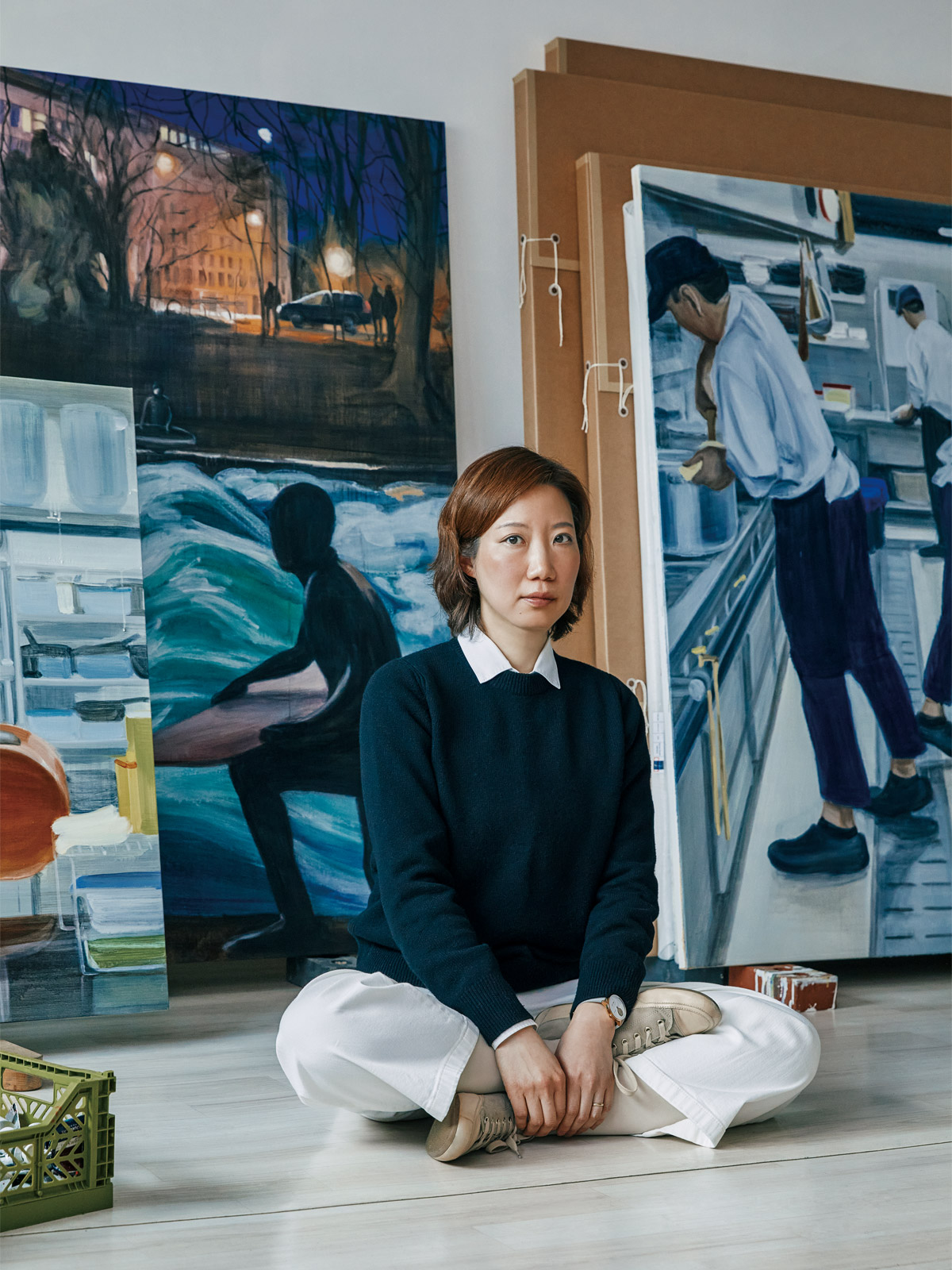Choi
Jeong Hwa (b. 1961) has created a variety of installations that bring cheap
everyday consumables such as plastic baskets, piggy banks, artificial flowers,
and brooms into the realm of art. By transforming these mass-produced everyday
consumer goods into artworks and moving them into museums, the artist blurs the
boundaries between high art and popular culture through so-called cheap pop
culture, or kitsch, and captures a slice of Korean society.
Choi
participated in a ‘museum’ group formed in 1987 around Koh Nak Beom and Lee
Bul, criticizing the tradition and authority of museums and breaking away from
the pre-existing art world, and attracted attention as a heretic in the art
world. Since the mid-1990s, he has been active in various fields as an interior
designer, installation artist, and art director, expanding the horizons of
Korean contemporary art and garnering attention as an artist who captures the
locality and universality on the international stage.
 Choi Jeong
Hwa, Rotten Art, 1995 ©Choi Jeong Hwa
Choi Jeong
Hwa, Rotten Art, 1995 ©Choi Jeong HwaChoi's early works were characterized
by a consciousness of criticizing the existing system of the art world. Among
them, Rotten Art, which was exhibited in 1995, displayed photographs of
meat, vegetables, and fish that had been decaying for a while in ornate gold
frames alongside photographs of unspoiled items. By placing photos of rotting
food in overly ornate frames, rather than the image of high art, the exhibition
blurs the boundaries of what constitutes art, while also criticizing and
satirizing the authoritarian and conventional art world of the time.
In addition, the artist brought an
installation work made of whole pig heads found in the market into the
exhibition hall, or showed works that used common and cheap objects in our
daily lives rather than conventional art materials.
 최정화, 〈플라스틱 파라다이스〉, 1997. 파리 OZ 갤러리 설치 전경. ©최정화
최정화, 〈플라스틱 파라다이스〉, 1997. 파리 OZ 갤러리 설치 전경. ©최정화Plastic is one of the cheap,
ready-made products that appears as a material in Choi's work. Plastic is also
a material that epitomizes the cultural characteristics of consumer society in
that any object can be made cheaply by mimicking its appearance while ignoring
the properties of the existing material. Focusing on the cheap, lightweight,
colorful, and transformable practical properties of plastic, the artist shows
various variations of plastic baskets, such as stacking them in the form of a
tower or transforming them into lights.
Among these works using plastic as a
material, Plastic Paradise (1997) is the work that put Choi on the world
stage. Plastic Paradise is an installation in the form of a tower
stacked with cheap plastic colanders in a lime green color that can be
purchased cheaply in the Korean traditional market.
Unlike the materials
alone, the way they are stacked vertically and dominate the exhibition space,
they appear to be beautiful works of art that make us forget for a moment that
they were originally cheap objects. With a simple stacking motion, the artist
transforms familiar everyday objects into works of art and creates temporary
structures that can be easily dismantled, playfully parodying the desire for verticality
and permanence
 Choi Jeong
Hwa, Breathing Flower, 2010, Installation view at Biennale of Sydney ©Choi Jeong Hwa
Choi Jeong
Hwa, Breathing Flower, 2010, Installation view at Biennale of Sydney ©Choi Jeong HwaIn 1995, Choi presented a giant potted
flower sculpture made using blower hydraulics and fabric outside the National
Museum of Modern and Contemporary Art (MMCA), using the flower images he had
been collecting since the early 1990s as the sole object. Since then, Choi has
continued to work on giant floral balloons made by inflating fabric, which have
been exhibited at various biennials and leading institutions around the world.
In the Breathing Flower series,
Choi added the motion of folding and unfolding flowers by installing motors.
The repetitive movement of the mechanical flowers, which are made of artificial
materials that do not decay, paradoxically reveals the finitude and emptiness
of living beings. Rather than stone or metal, which are commonly used in public
art, the balloon sculptures, which are nothing more than pieces of fabric when
deflated, are installed around the world, deconstructing the conventions of art
and blurring the boundaries between art and non-art.

Choi Jeong Hwa, Dandelion, 2018. ©MMCA
Furthermore, Choi's public art works
have been presented in the United Kingdom, Belgium, the United States,
Shanghai, and elsewhere as part of the Happy Together series, a
participatory project created with citizens. This is a public art project in
which visitors bring their own plastic waste to the museum, and unlike artworks
in museums, which are usually untouchable, they are created and installed in a
way that breaks down the boundaries between the artwork and the audience, such
as children kicking and playing with colanders that are parts of the artwork.
Such participatory art projects have
also been carried out in Korea since 2008 under the name ‘Gather Together.’ In
2018, as part of the MMCA Hyundai series, people collected tableware that they
no longer used.
The collected utensils are then
engraved with the names of the donors and turned into artworks. About 7,000 of
the donated household items were transformed into a large-scale installation, Dandelion
(2018), which was installed outside the National Museum of Modern and
Contemporary Art, Seoul in the form of a giant dandelion seed, 9 meters tall
and weighing 9.8 tons.
 Choi Jeong
Hwa, Blooming Matrix, 2016-2018. ©MMCA
Choi Jeong
Hwa, Blooming Matrix, 2016-2018. ©MMCASelected for the Hyundai Motor Series
at the National Museum of Modern and Contemporary Art in 2018, Choi's
exhibition “MMCA
Hyundai Motor Series 2018: CHOIJEONGHWA - Blooming Matrix” shows the materiality of
objects that extends beyond plastic, which has been considered his signature
material, to wood, steel, and fabric. Among them, Blooming Matrix (2018) is an installation work in which objects
collected by the artist from various places are harmonized together, allowing
the audiences to pass through and appreciate the works in which the time and
space of the objects are mixed.
As in his previous work, Plastic
Paradise, 146 flower pagodas made of stacked objects were gathered to
create a serene forest-like space. In this exhibition, the artist also
presented the traces of time that are embedded in old and worn-out household
items, such as a tower of old dining tables made of donated furniture from a
house where three generations have lived, and old washboards collected from
different parts of China, arranged in a regular pattern across the walls.
In this way, Choi's work communicates
with the audience in an easy way and form. Choi starts from our daily lives and
reinterprets the beauty he finds in them in the form of art, allowing audiences
to enjoy them together.
“Art is not to be possessed, but to be enjoyed. A work of art is not to create beauty, but to find beauty in a small leaf that falls in front of your house.”
 Artist Choi Jeong
Hwa ©Choi Jeong Hwa
Artist Choi Jeong
Hwa ©Choi Jeong HwaBorn in Seoul in 1961, Choi Jeong Hwa studied painting at Hongik University. Choi has participated in various exhibitions such as “When Forms Come Alive” (Hayward Gallery, London, 2024), “Come Together” (Education City, Qatar, 2022), “SARORISARORIRATTA” (Gyeongnam Art Museum, P21, Changwon, Seoul, 2020), “MMCA Hyundai Motor Series 2018: CHOIJEONGHWA - Blooming Matrix” (National Museum of Modern and Contemporary Art, Seoul, 2018), Honolulu Biennale (2017), “Megacities Asia” (Museum of Fine Arts, Boston, 2016), Busan Biennale (2014), 17th Sydney Biennale (2010), Gwangju Biennale (2006), Venice Biennale - Korea Pavilion (2005), Liverpool Biennale (2004), Lyon Biennale (2003), and many other exhibitions, biennales, and projects.
References
- 최정화, Choi Jeong Hwa (Artist Website)
- 국립현대미술관, MMCA 현대차 시리즈 2018: 최정화 – 꽃,숲 (National Museum of Modern and Contemporary Art Korea, MMCA Hyundai Motor Series 2018: CHOIJEONGHWA - Blooming Matrix) :
- 코리안 아티스트 프로젝트, 최정화 (Korean Artist Project, Choi Jeong Hwa)
- 국립현대미술관, 야외프로젝트 «최정화: 민들레» (National Museum of Modern and Contemporary Art Korea, Outdoor Project CHOIJEONGHWA: Dandelion
- 메종코리아, 최정화 작가의 향유하는 예술, 2022.11.04 :






















